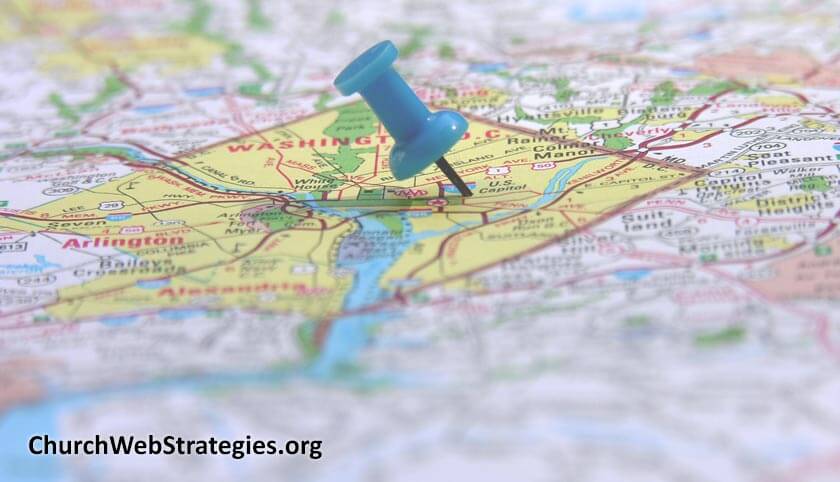Because churches traditionally have physical locations, the majority of searches for churches have locational context. As search engines have evolved, they realized this key component and integrated it into their search results. The prime example of this is Google’s integration of their search, maps, and location listings. If you execute a search for “pizza”, you will not get a global listing of pizza shops, but (especially if you are on a mobile device) ones closest to your geographical area. Given this illustration, you can see how optimizing and promoting your church for local search is of great importance. Here are three steps for accomplishing this.
Consistent N.A.P.
N.A.P. stands for name, address, & phone number; which needs to be the same for every digital space it is displayed. Of course you will want to include your website whenever possible, but the N.A.P. is most prominent. The good news is that while this will be fairly intensive, once you clean this up your website should become the source of truth for the future. Spaces you should check include yellow pages listings, events in newspapers, city guide websites, map tools, and many others you can discover for yourself via search tools.
As you discover all of these places that have your information posted, document them in a spreadsheet with the URL of the website, what information they posted, when you last checked it, and if it was correct. This may be an annual exercise to check those websites to ensure they still have your correct information, especially during slower periods of time at your church.
Confirm Listings
Many of the places you tracked on your spreadsheet have mechanisms for you to “claim” your listing and make edits yourself. Many times you need to confirm that you are indeed someone who has the authority to make such edits. You often need to input a code that is mailed to your church office, or phoned in to your church’s main phone line. Coordinate with your church secretary so that these are captured and you can log in to these websites to maintain the correct information, or better yet, add items such as your website URL, email addresses, and any social media elements.
Develop Citations
The final aspect is to cultivate a relationship with these websites and listing. Many have ranking mechanisms that allow people to rate your church and/or leave feedback. These ratings are often pulled into larger sites, such as Google Places. If people are providing feedback, you may be able to interact; thanking them for positive comments, and addressing any critiques. If anything, it would be a great places to look for hints about what you might be doing right or wrong. Feeling courageous? Post a page with all of these listings and ask visitors to post honest feedback on these spaces that are obviously not directly associated with your church. It demonstrates your desire to act on that feedback, and those ratings may be that unbiased opinion that may bring in your next visitor.
Action Item: Major search engines are becoming more tightly integrated with the concept of a local search. They present the typical set of relevant results, as well as a map displaying where those local results are located. Once you delve into said map, the results are displayed along with your information. This tighter integration should prove to be a great tool in helping people in your city looking for a church to more easily find yours. Walk through these steps and add them into your church website maintenance calendar. While the initial steps may prove tiresome, the follow-up reviews will be easier; plus I think it is easy to see how useful and powerful the concept of local search is.
Note: This article was inspired by the SEO 101 Podcast episode titled “Getting Going with Local Search”
Image Courtesy of Barb Ballard.

